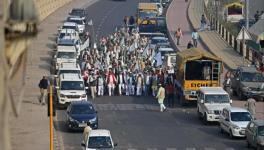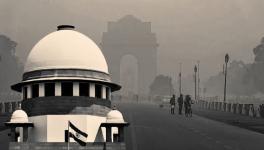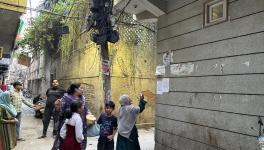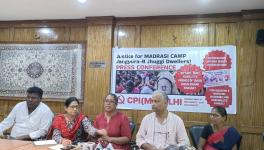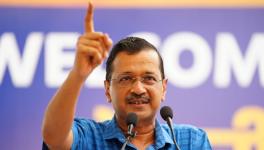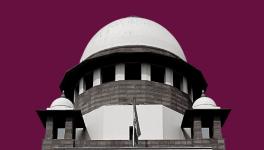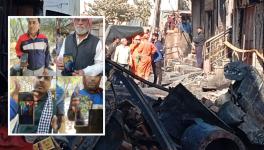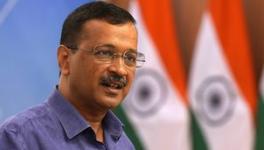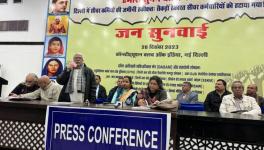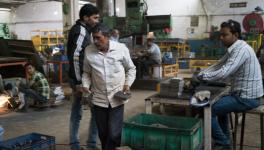Several Delhi Villages Waiting for Hospitals for 30 Years Amid Raging Pandemic
Rage and anguish reflect in the eyes of Narendra Singh whenever he passes by a nearby barren plot while strolling around his village in west Delhi.
The plot, part of common land owned by the Gram Sabha, was donated by the inhabitants of Baprola village to the government in 1984 for building a hospital. Thirty-eight years later, their hopes for a decent hospital-cum-maternity home have been dashed, Singh tells Newsclick.
Showing a bulky file containing notices and right to information (RTI) applications, Singh says neither the Centre nor the Delhi Government could explain the delay in building the hospital. “Nobody understands the pain of the pregnant women who travel, at least, 11 kilometres to Rao Tula Ram Memorial Hospital, in Jaffarpur Kalan, for delivery. In which country residents of the national capital travel so much to access basic healthcare facilities?” an angry Singh asks.
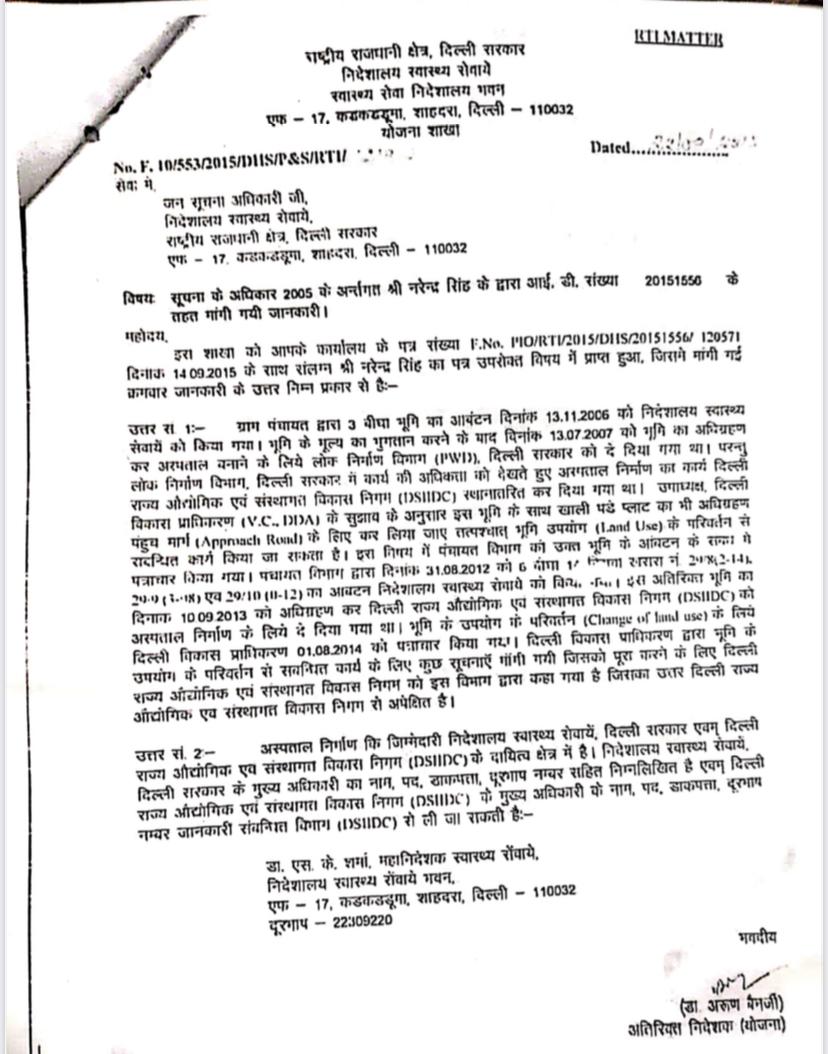
Twenty-three years after the villagers donated the plot, it was formally acquired in July 2007. The letter furnished by Arun Banerjee, additional director (planning), Directorate General of Health Services (DGHS), Delhi, in response to an RTI application maintains that the directorate made the payment in lieu of the acquisition and transferred the land to the Public Works Department (PWD). Citing work overload, the PWD transferred the plot to Delhi State Industrial and Infrastructure Development Corporation (DSIIDC), which reportedly cited its weak financial position in failing to construct the hospital.
However, Singh claims that DSIIDC officials informed him that the land was returned to the PWD. “This area elected three MLAs from different political outfits with the hope of getting the hospital constructed. All of them laid the foundation stones but the construction never began.”
Another RTI application filed by the villagers revealed that the DGHS has still not furnished the details of the hospital to the PWD. “The scope of the hospital and its functional requirements are yet to be furnished by DGHS,” the executive engineer, health project division (west), PWD, said in response to the application.
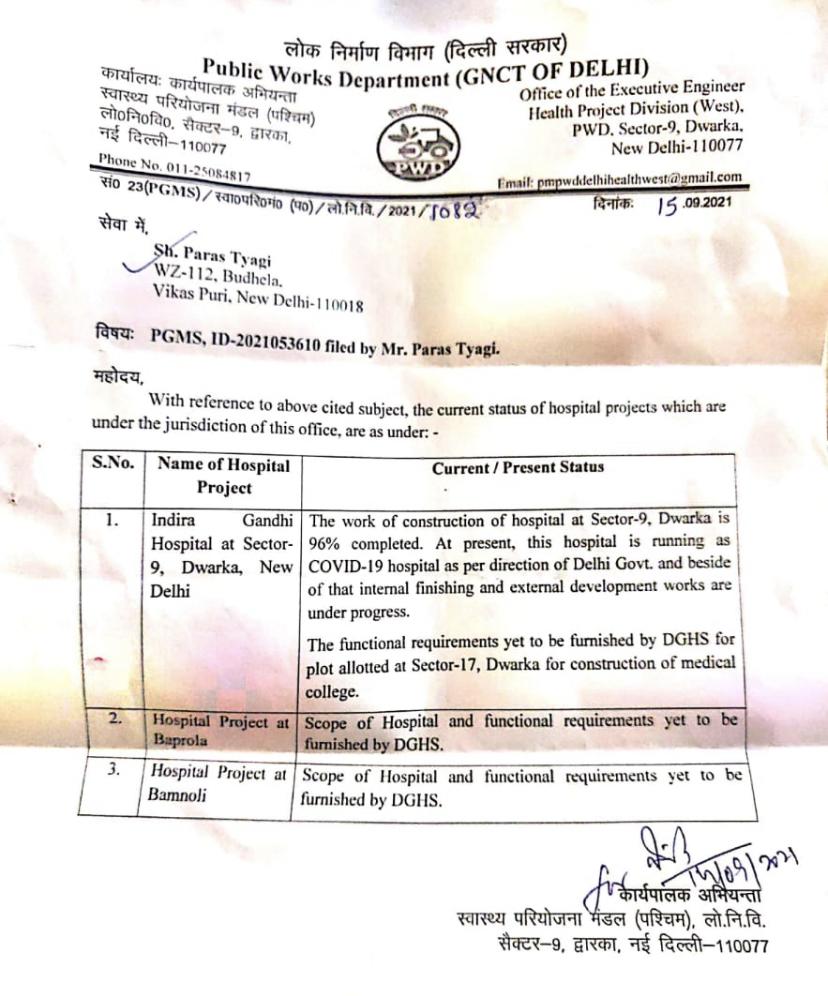
Recalling the worst wave of COVID-19 in April last year, Singh says, “We had several hundred cases with 50 people, some as young as 30 years, alone dying in our village. The third wave of coronavirus has already hit us but the government hasn’t learned anything from the horrific experience.”
Other villagers complain about how the nearest hospital is poorly connected with the public transport network. “You cannot reach the hospital before 30 minutes even in your personal vehicle,” says Malti Nath recalling her experience and that of the families whose members died of cardiac arrest midway to the hospital.
Rajveer Solanki, another resident who retired as the principal of Dr. Bhim Rao Ambedkar College, Delhi University, tells Newsclick over the phone that it is a myth there is a tussle between the locals and the migrants.
“The national capital developed in various stages. First, the migrants from Pakistan who had faced the horrors of Partition settled here and slogged to make the city beautiful. Then, the exodus of poor migrants from Uttar Pradesh, Bihar, Odisha and West Bengal in 1990s provided the much-needed workforce to build the city further,” Solanki says.
Subsequent governments have “failed both the locals and the migrants, who are crammed into small spaces lacking basic amenities. My grandchildren often ask me why cannot villages have neat roads, bookstores and gardens?” Solanki adds.
The inhabitants of neighbouring Budhela Village, in Vikas Puri, have a similar tale to narrate. Although the village was declared urbanised in 1966 and the acquisition was completed in 1972, the Delhi Development Authority (DDA) finalised a residential scheme way later in 1989 allocating a parcel of land for the hospital, villager Paras Tyagi tells Newsclick. However, the land is vacant for the last 32 years.
“The Delhi government and the elected representatives never took initiative to construct the hospital since 1993. In 2021, when I enquired about the action taken report on the proposed hospital, the DDA said that the file is missing,” says a visibly shocked Tyagi.
Recalling his experience of growing up in a community with no healthcare facilities, Tyagi says, “The community suffered a lot till the 1990s due to the lack of a hospital as they neither had money to afford private hospitals nor could travel to AIIMS in case of emergencies. Subsequently, the residents could afford health expenses due to the boom in the local rental economy and commercial activities.”
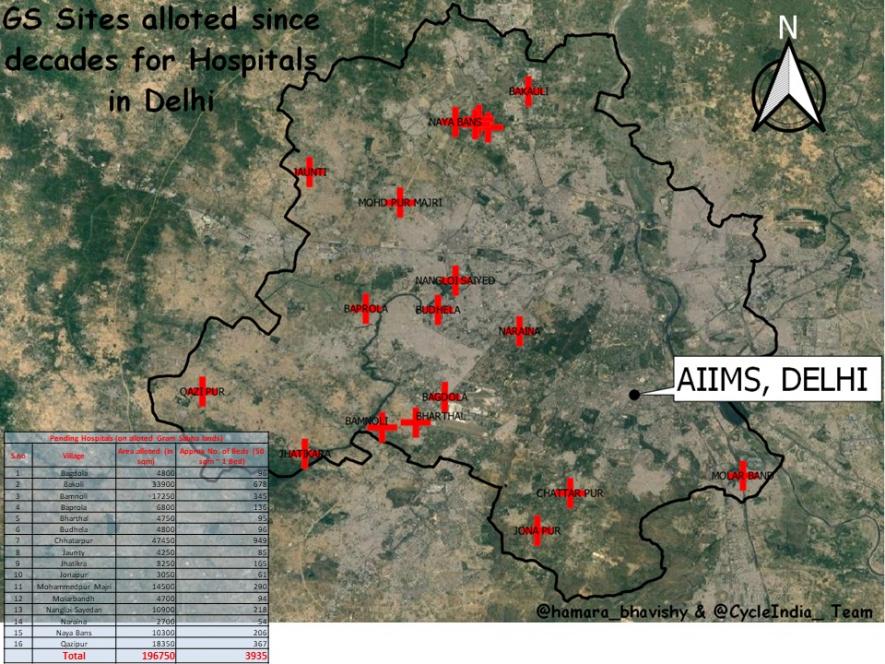
The pandemic “changed the situation with the villagers realising the need of a government hospital in the face of the indifference, incompetence and apathy of private hospitals”, Tyagi says. “The community feels it was denied the right to access public healthcare facilities. Moreover, instead of constructing the hospital on the allotted land, the Delhi government has been building another hospital in nearby Hastsal village at a slow pace since the last one year.”
Tyagi, also the cofounder of the Centre for Youth, Culture, Law and Environment, says the roots for the slow pace of development in Delhi’s villages could be traced to discrepancies in the implementation of the master plans.
“As per the Master Plan For Delhi-2041, rules and regulations to manage Delhi villages will be notified within two years of approval of the plan—this shows the government’s seriousness about developing the villages,” Tyagi says.
Tyagi’s RTI application revealed that the National Institute of Urban Affairs, hired by the DDA, in turn, hired a third party that surveyed only 4 out of 360 villages to prepare the plan for Delhi villages. “Most villagers are not aware of it. The ones who are aware don’t have the resources and support to fight the decision-makers,” he says.
Get the latest reports & analysis with people's perspective on Protests, movements & deep analytical videos, discussions of the current affairs in your Telegram app. Subscribe to NewsClick's Telegram channel & get Real-Time updates on stories, as they get published on our website.









